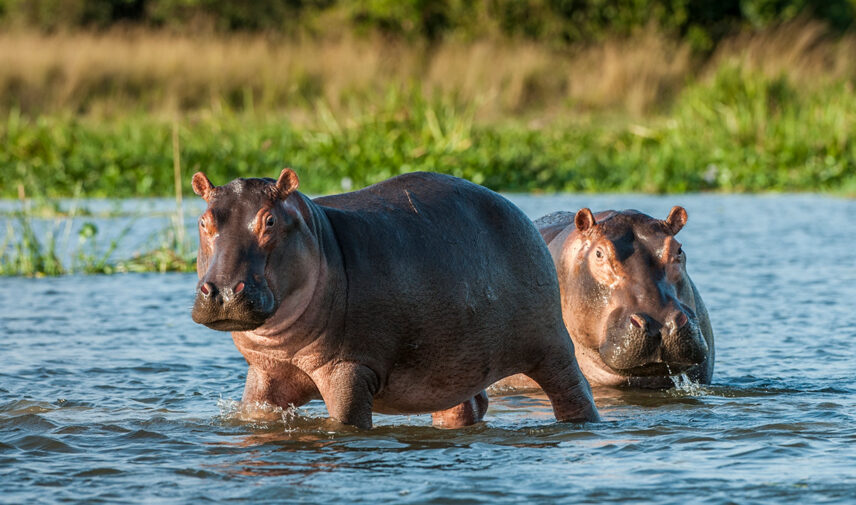No safari is complete without a hippo sighting. They’re perhaps one of the most outright entertaining animals you’ll see out in Tanzania, as the hippopotamus has strange social dynamics, an interesting anatomy, and plenty of sass under that lazy exterior. Even when they’re trying to scare off predators by opening their mouth as wide as possible, their snarl looks more like a yawn.
This is just one of the many fun bits of information that one can discover about the humble hippo and the life they lead out on the riverbeds. As such, we’ve collected a hippota-mess of facts for you to learn more about these delightful animals.
Hippos weigh a ton (literally).
Hippos are the world’s third-largest land creature behind the elephant and the rhino, and they weigh about as much as a car – nearly 1.4 to 5 tons on average. Their babies, as well, weigh nearly 50 to 100 pounds.
Hippos live in multigenerational “bloats.”
If you think you have a large family, consider the average group of hippos, known humorously as a “bloat.” The average bloat is made up of a male ‘bull,’ thirty or so female ‘cows,’ and however many ‘calves’ they may have.
Hippos are very territorial.
Hippos have a very specific territory that their “bloat” occupies, and if another animal comes by, it’ll interpret their presence as a threat. Turf-shaking battles for the best waterfront property are common, and any critter caught between two warring bulls should do one thing: run.
Hippos are surprisingly fast.
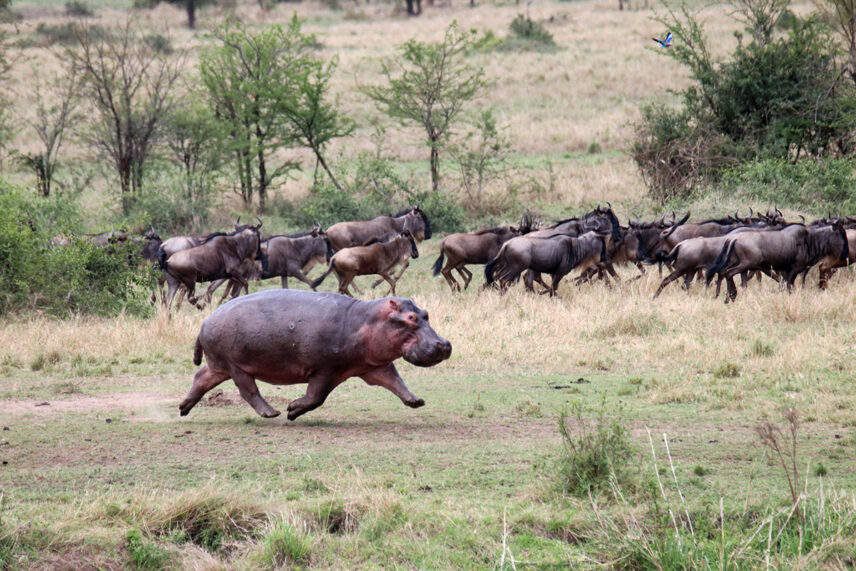
They can reach roughly 19 MPH at full sprint! In fact, the word “hippopotamus” comes from Ancient Greek, who dubbed the hippo the “water horse” when they first encountered them in Egypt. The pudgy, large hippo might not look like a stallion, but their speed certainly might make you think they were related if one’s charging at you.
Hippos are born in the water, but they can’t actually swim.
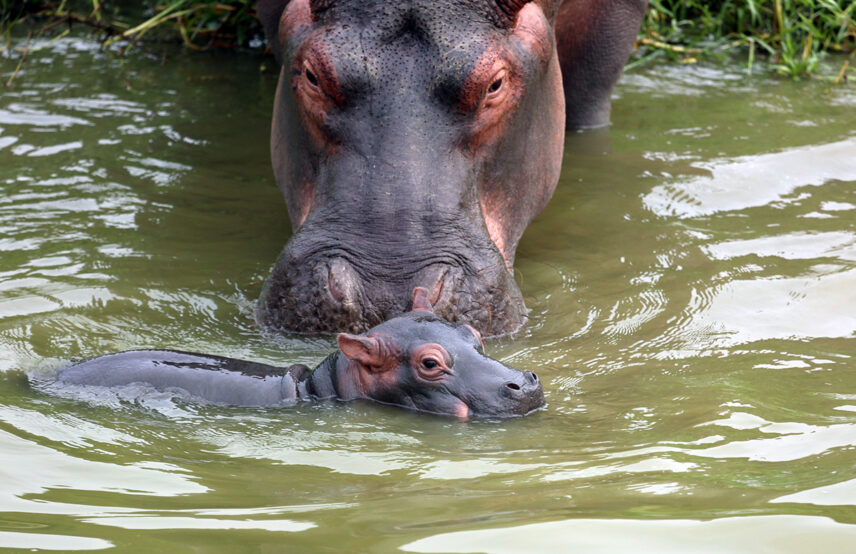
Being an amphibious mammal, hippos spend over three-quarters of their lives in rivers and lakes, enjoying the cool and protective water. But they can’t swim – they’re too heavy! If a calf is born underwater, its mother must nudge it to the surface so it can get its first breath of fresh air.
Hippos make their own sunscreen.
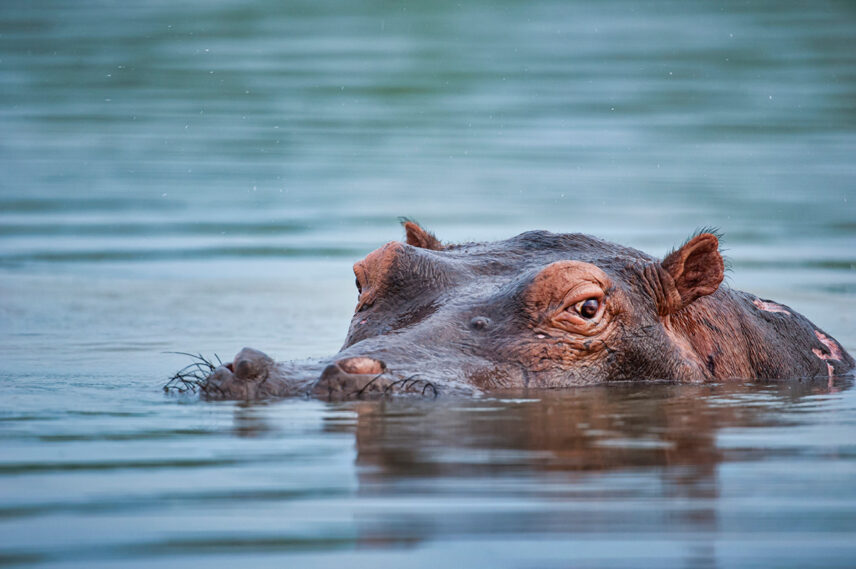
It’s a red-colored substance known as hipposudoric acid or “blood sweat,” which protects a hippo’s skin from microbes and sun damage. It’s neither blood nor sweat (and hippos don’t even have sweat glands, which is why they hang out in the water and mud all day), but the name stuck.
Hippos have commutes.
A Hippo spends six hours or so on land each night. They carve out paths on land that have been dubbed “hippo highways,” as they go to the same area of grassland each night thanks to their territorial nature. Surprisingly enough, there’s not much other animal traffic when the hippo is out and about. Would you want to hold up a hippo highway?
Hippos are, by human standards, “hungry hungry.”
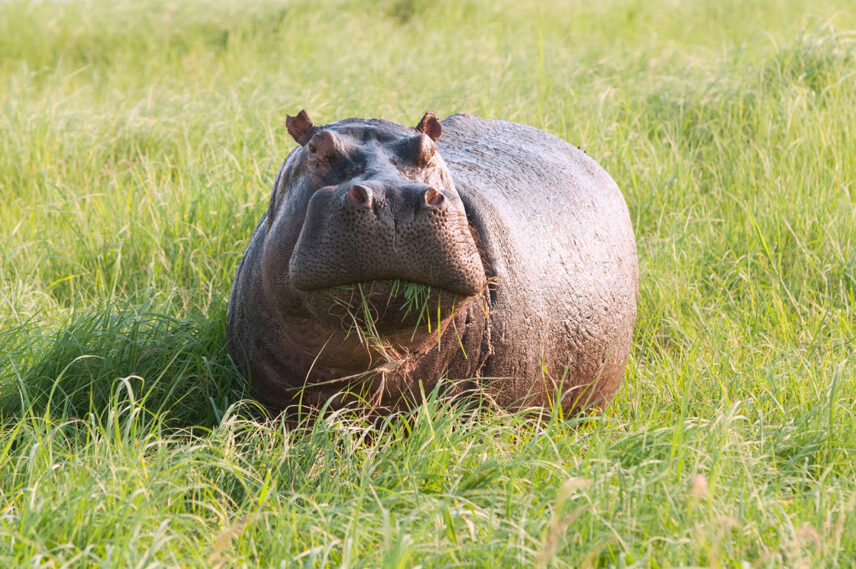
To our eyes, hippos eat what seems like an incredible amount of food. They’re herbivores, and their diet is a lot like other plant-eaters out on the plains – some fruit, but they mostly eat wild grass. And when we say “mostly,” we mean they mow down roughly 75 pounds of the green stuff each night. That weight constitutes an appropriate daily diet for their size, but it’s a mind-boggling amount of food compared to what we eat. After all, that’s a lot of fiber, and you might want to hold your nose should you get downwind of a bloat.
Hippos are extremely dangerous.

Nearly 500 people in Africa are killed by hippos each year, which says something about their temperament and prowess: they’re vicious fighters, as large as your average bull, with sharp, large teeth (their canines are nearly two feet long!) and astonishing speed. So, don’t try to befriend a hippo should you encounter one.
There’s nothing quite like seeing a hippo in its natural habitat, interacting with the other creatures in the water, lazing about under the Tanzanian sun. The good news is that Thomson can help you witness the odd beauty and compelling majesty of the hippo from a safe distance – after all, that’s why they invented the telephoto lens.
